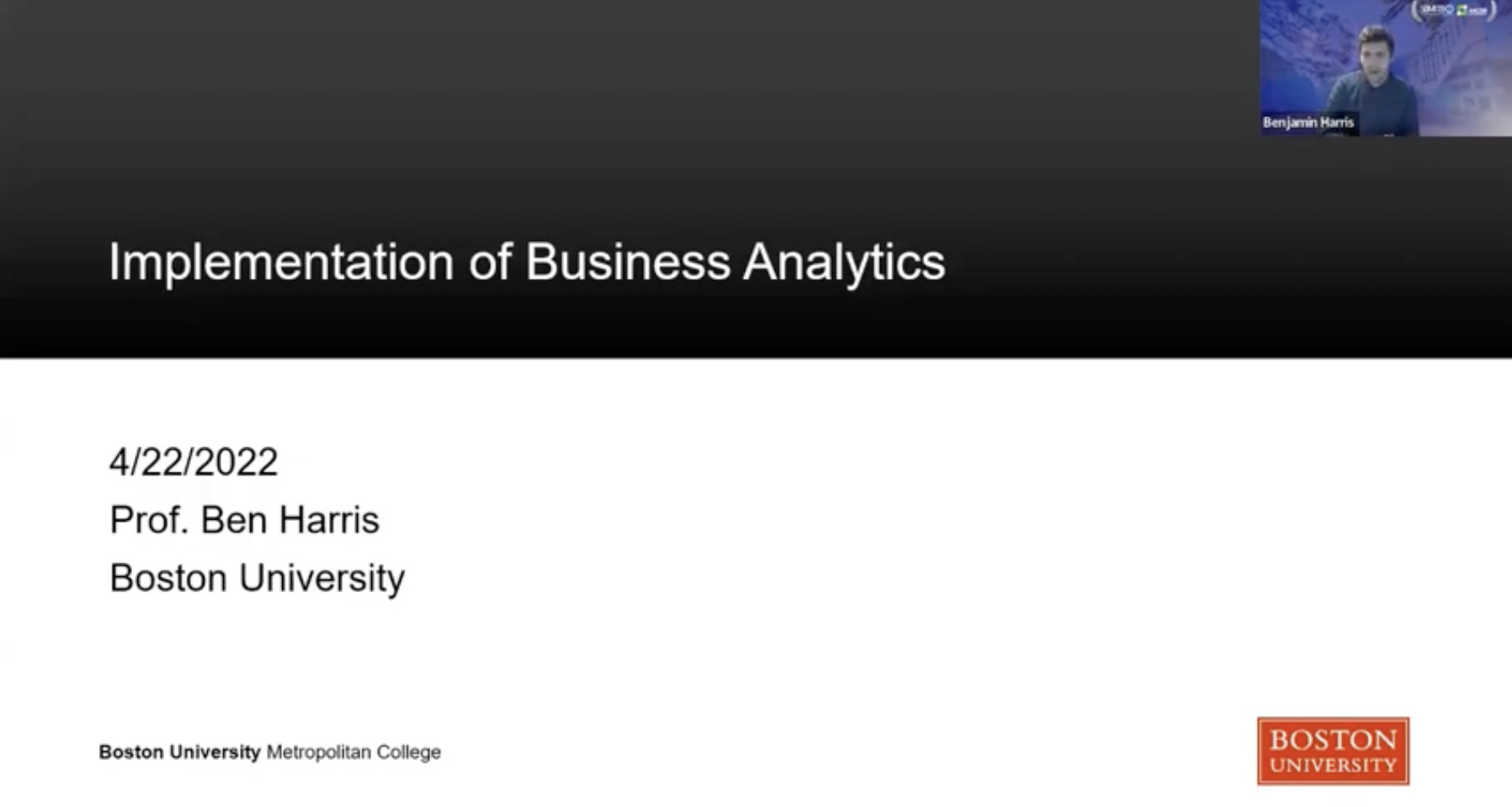In collaboration with Boston University (BU), SBM ITB presented a guest lecturer, Dr. Benjamin P. Harris, Assistant Professor of BU, on Friday (22/4/2022). As an Industrial Engineer with degrees from Northeastern University and Boston University, he first opened his lecture with the history of Business Analytics. With professional experience as an engineer in business development and analytics, Dr. Harris explained three eras of business analytics.
 First is the era of business intelligence until the mid-2000s, an era in which people began to understand business phenomena objectively. Next, it is an era of big data that has occurred recently. It is based on the internet and social network that firms gather and analyze new kinds of information. Lastly, it is the current era of data-enriched offering. In this era, every firm in every industry can create products and services based on data analyses.
First is the era of business intelligence until the mid-2000s, an era in which people began to understand business phenomena objectively. Next, it is an era of big data that has occurred recently. It is based on the internet and social network that firms gather and analyze new kinds of information. Lastly, it is the current era of data-enriched offering. In this era, every firm in every industry can create products and services based on data analyses.
 Dr. Harris next presented the hard skills concerning quantitative tools in analytics. “The hard (technical) skills in analytics are the tools in your toolbelt,” said Benjamin to illustrate his presentation. It is based on the three phases of business analytics: descriptive, predictive, and prescriptive, with questions that enable them to be put to use.
Dr. Harris next presented the hard skills concerning quantitative tools in analytics. “The hard (technical) skills in analytics are the tools in your toolbelt,” said Benjamin to illustrate his presentation. It is based on the three phases of business analytics: descriptive, predictive, and prescriptive, with questions that enable them to be put to use.
Besides the hard skills, he also presented the soft skills in Business Analytics. In his opinion, several groups of people are involved in the analytics process within a company: investors, practitioners, directors, and customers. He believed that these four are all necessary for a sustainable analytics implementation.
Next, Dr. Harris talked about the importance of data. He argued that if companies do not invest the technology, they will be left behind. With the analyses, firms can measure the impact of analysis implementation. In addition, the quality of decisions increases with optimal data analytics.
Lastly, he described supply chain analytics. The first thing is to examine market data for potential additional suppliers. Then, he also mentioned descriptive analytics to estimate supply chain impact, predictive analytics to estimate the new cost of the product, and prescriptive analytics to define new products with new materials.




